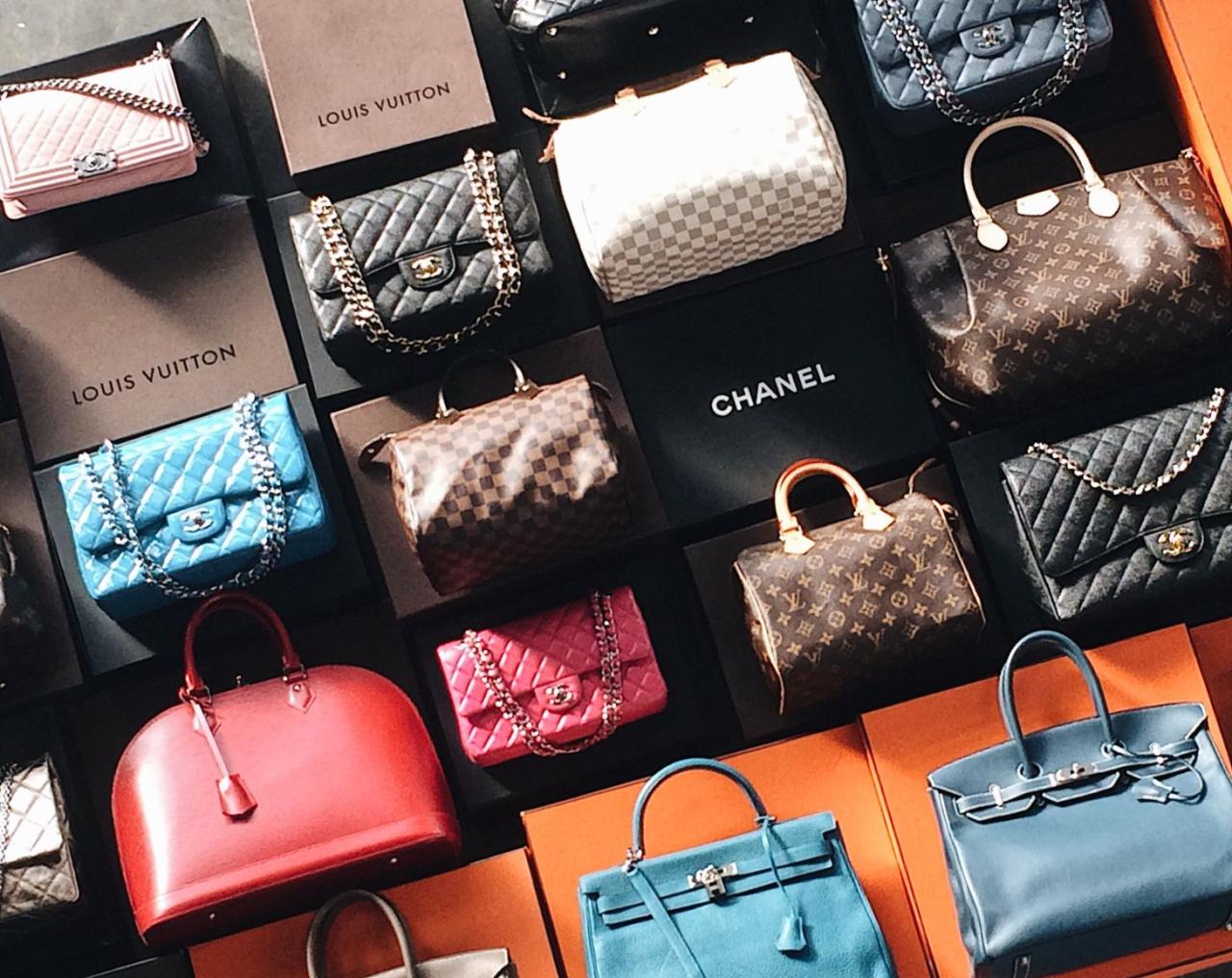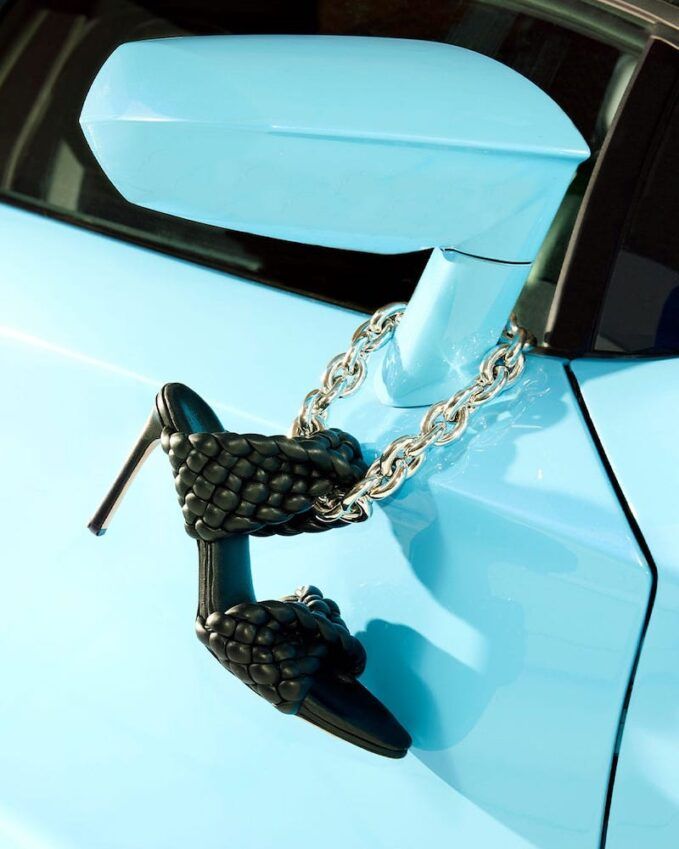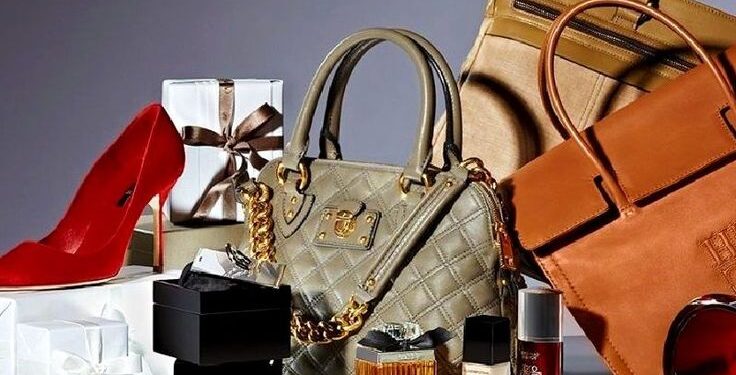The luxury goods sector has experienced an extraordinary transformation over the past decade, evolving from a niche market for the elite into a booming industry that appeals to a broader demographic. This comprehensive analysis explores the multifaceted growth of the luxury goods market, examining the factors driving this surge, the impact of technology and social media, evolving consumer behaviors, and the future trends poised to reshape the industry. In this article, we delve deep into the global dynamics that have spurred rapid expansion in the luxury market, providing a detailed narrative that blends historical insights with contemporary developments.
Over the last few years, the luxury goods market has witnessed a remarkable surge in growth. Once synonymous exclusively with opulence and exclusivity, luxury brands have managed to capture the imagination of a broader audience by blending tradition with innovation. This evolution is not only reflected in the increased revenues of luxury conglomerates but also in the way luxury is perceived by modern consumers. In this article, we examine the underlying reasons behind the growth, the strategic shifts adopted by luxury brands, and the key drivers shaping the market landscape.
Historical Context and Market Evolution
Traditionally, luxury goods were reserved for a small, affluent segment of society, characterized by high price tags, artisanal craftsmanship, and a reputation for exclusivity. However, several pivotal changes have contributed to the democratization of luxury:
A. Economic Expansion:
The global economy’s steady expansion, particularly in emerging markets, has led to the creation of a new middle and upper class with disposable income. Nations such as China, India, and Brazil have seen significant growth in consumer spending, providing luxury brands with fresh markets to explore.
B. Cultural Shifts:
As globalization increased cultural exchange, the aspiration to own luxury items spread far beyond traditional Western markets. The influence of international media and social platforms has enabled consumers worldwide to appreciate and desire products once seen as unattainable.
C. Technological Advancements:
Digital transformation has played a crucial role in this evolution. The internet and social media have not only expanded the reach of luxury brands but have also redefined how they interact with consumers. Brands now leverage digital platforms for storytelling, customer engagement, and e-commerce, making luxury more accessible without diluting its exclusivity.
D. Changing Consumer Preferences:
Modern consumers are not solely driven by brand legacy; they seek experiences, sustainability, and personalization. Luxury brands have adapted by incorporating contemporary design, eco-friendly practices, and bespoke services into their offerings.
This evolution has led to an unprecedented growth phase in the luxury market, fueled by the synergy between heritage and innovation.
Key Drivers of Market Growth
The rapid expansion of the luxury goods market can be attributed to several interconnected factors. Each driver has contributed to reshaping the industry’s landscape, ensuring that luxury brands remain relevant in a fast-changing global environment.
A. Globalization and Emerging Markets:
The rise of new economic powerhouses has significantly broadened the luxury market. As countries like China, India, and the Middle East continue to develop, there is an increasing appetite for luxury products among their burgeoning affluent populations. These markets are not only large in number but are also characterized by a deep desire to associate with global luxury brands, often seen as a symbol of success and prestige.
B. Digital Transformation:
The integration of digital technologies into the luxury sector has revolutionized consumer engagement. E-commerce platforms, virtual showrooms, and augmented reality applications have made it easier for consumers to explore and purchase luxury items from anywhere in the world. This digital leap has also paved the way for innovative marketing strategies, such as influencer collaborations and targeted social media campaigns, which have proven highly effective in driving sales.
C. Social Media Influence:
Platforms like Instagram, TikTok, and Facebook have become essential tools for luxury brands. They serve not only as marketing channels but also as platforms for community building. Influencers and celebrities play a significant role in shaping trends and can drive demand almost instantaneously. Social media campaigns, often characterized by high-quality visuals and storytelling, have helped to bridge the gap between exclusivity and accessibility.
D. Consumer Experience and Personalization:
Modern luxury consumers value personalized experiences over mere product ownership. Brands are now investing in customer relationship management and offering bespoke services to cater to individual preferences. This focus on personalization has fostered deeper brand loyalty and encouraged repeat purchases, contributing to sustained growth.
E. Sustainability and Ethical Practices:
As environmental concerns become more prominent, sustainability has emerged as a key factor in consumer decision-making. Luxury brands that adopt eco-friendly practices and transparent sourcing not only meet regulatory demands but also resonate with socially conscious consumers. Initiatives such as using recycled materials, reducing carbon footprints, and supporting fair trade are now integral parts of many luxury brands’ value propositions.
Digital Transformation and Its Impact
Digital transformation is at the heart of the luxury goods market’s rapid growth. Technology has redefined the customer journey, from the initial spark of interest to the final purchase decision, and even post-purchase engagement. Here’s how technology is making a substantial impact:
A. Enhanced Customer Engagement:
Digital platforms allow brands to connect with their audiences in real-time. Live chats, virtual assistants, and personalized recommendations contribute to a seamless and engaging shopping experience. The use of data analytics helps brands understand consumer behavior, tailor marketing strategies, and optimize the overall customer experience.
B. E-commerce Expansion:
The rise of e-commerce has democratized access to luxury products. High-end brands have traditionally relied on exclusive physical stores to maintain an aura of mystique. However, with the advent of online shopping, these brands are now able to reach customers beyond geographical limitations. Online sales channels offer convenience and accessibility, attracting a younger, tech-savvy audience that values both quality and ease of purchase.
C. Augmented Reality (AR) and Virtual Reality (VR):
AR and VR technologies have introduced innovative ways to experience luxury. Virtual showrooms and try-on features enable customers to visualize products in a highly interactive manner. This technological leap not only enhances the shopping experience but also bridges the gap between physical and digital retail.
D. Blockchain for Authenticity:
The luxury industry has long battled counterfeiting issues. Blockchain technology offers a promising solution by providing an immutable record of product provenance. Consumers can verify the authenticity of their luxury purchases, thereby increasing trust and brand credibility.
Social Media and Influencer Culture
Social media platforms have emerged as vital channels for luxury brands to connect with consumers, especially millennials and Generation Z. These platforms provide an ideal space for storytelling, visual presentation, and community engagement. The influence of social media can be broken down into several key aspects:
A. Visual Storytelling:
Platforms like Instagram and Pinterest are built on aesthetics, making them perfect for showcasing luxury items. High-quality images, videos, and behind-the-scenes glimpses into the world of luxury create an immersive brand narrative that captivates audiences.
B. Influencer Collaborations:
Collaborations with influencers and celebrities have become a cornerstone of luxury marketing strategies. These partnerships allow brands to tap into the influencer’s fan base, reaching new and diverse consumer segments. Influencers often share their authentic experiences with luxury products, lending credibility and a personal touch to the brand message.
C. User-Generated Content:
Encouraging consumers to share their luxury experiences online helps build community and trust. User-generated content serves as powerful social proof, reinforcing the brand’s reputation and expanding its reach organically.
D. Targeted Advertising:
Social media platforms offer sophisticated advertising tools that enable luxury brands to target specific demographics. Through tailored ad campaigns, brands can reach potential customers who are likely to have an interest in high-end products, thereby increasing conversion rates and driving sales.

Evolving Consumer Behavior and Expectations
The luxury market’s rapid growth is also a reflection of changing consumer expectations. Today’s luxury consumers are more informed, discerning, and value-driven compared to previous generations. They look beyond the mere possession of a high-priced item and seek deeper, more meaningful experiences. Here are some critical aspects of modern consumer behavior in the luxury sector:
A. Experience Over Ownership:
Modern consumers prioritize unique experiences over material accumulation. Luxury brands are responding by offering immersive experiences such as exclusive events, personalized shopping sessions, and custom-made products. This shift from ownership to experience has become a defining trend in the industry.
B. Demand for Transparency:
Consumers today are more concerned with ethical practices and sustainability. They demand transparency in production processes, sourcing, and corporate social responsibility initiatives. Brands that openly communicate their efforts to reduce environmental impact and support social causes are more likely to earn consumer trust and loyalty.
C. Personalization and Customization:
Personalization is no longer a luxury; it is expected. Consumers appreciate when brands tailor their offerings to individual tastes and preferences. Customization options, such as monogramming, bespoke designs, and personalized packaging, enhance the perceived value of luxury products and foster stronger emotional connections.
D. Digital Savviness:
The modern luxury consumer is digitally adept and seeks convenience. They value seamless online experiences that mirror the exclusivity of in-store shopping. Digital innovations such as virtual try-ons, AI-driven recommendations, and interactive websites have become essential in meeting these expectations.
Global Market Trends and Regional Analysis
The rapid growth of the luxury goods market is not uniform across the globe. Different regions exhibit unique trends, driven by varying economic conditions, cultural factors, and consumer behaviors. A detailed regional analysis reveals the following insights:
A. Asia-Pacific Dominance:
The Asia-Pacific region, led by China, remains the powerhouse of luxury consumption. With an expanding middle class and increasing disposable incomes, countries in this region have become key drivers of global luxury sales. The region’s consumer base is characterized by a strong desire for international brands, and social media plays a significant role in shaping their purchasing decisions.
B. European Heritage:
Europe has long been synonymous with luxury, owing to its rich history of craftsmanship and design excellence. Iconic brands from Italy, France, and Switzerland continue to uphold the legacy of quality and exclusivity. While the European market remains mature, its focus has shifted towards innovation, sustainability, and digital integration to appeal to a younger audience.
C. North American Trends:
In North America, luxury consumption is marked by a blend of traditional brand loyalty and a growing appetite for experiential luxury. American consumers are increasingly seeking products that offer both quality and a narrative of innovation and social responsibility. The market here is also characterized by robust online sales channels and a high degree of digital engagement.
D. Emerging Markets in the Middle East and Latin America:
The Middle East and Latin America have emerged as promising markets for luxury brands. In the Middle East, rapid urbanization, high disposable incomes, and a strong affinity for opulence have propelled luxury consumption. Similarly, Latin American consumers, driven by economic growth and a desire for status symbols, have contributed significantly to the global luxury market’s expansion.
Sustainability and Ethical Practices in Luxury
Sustainability has evolved from a niche concern to a mainstream expectation among luxury consumers. Brands are increasingly adopting sustainable practices not only to meet regulatory requirements but also to align with the values of their clientele. The movement towards ethical luxury is evident in several initiatives:
A. Eco-Friendly Materials:
Many luxury brands are investing in the development of eco-friendly materials that do not compromise on quality or aesthetic appeal. Innovations in recycled fabrics, sustainable leather alternatives, and biodegradable packaging are gradually becoming standard in the industry.
B. Transparency in Supply Chains:
Consumers today demand to know the origins of their products. Luxury brands are responding by enhancing transparency in their supply chains, ensuring ethical sourcing and fair labor practices. Blockchain and other traceability technologies are increasingly employed to authenticate the journey of a product from raw material to finished item.
C. Corporate Social Responsibility (CSR):
Beyond environmental sustainability, luxury brands are actively engaging in CSR initiatives that support local communities, preserve cultural heritage, and promote social welfare. These efforts not only reinforce brand credibility but also foster a sense of shared purpose with consumers.
D. Long-Term Value Over Fast Fashion:
The luxury market inherently emphasizes longevity and timelessness. As a result, many luxury brands promote the idea of investing in products that are built to last, in contrast to the disposable nature of fast fashion. This philosophy resonates well with consumers who are increasingly conscious of waste and the environmental impact of their purchases.
The Role of Innovation and Technological Integration
Innovation remains a critical pillar for sustaining growth in the luxury goods market. As consumer expectations evolve, luxury brands must continually adapt by integrating new technologies and creative approaches into their product offerings and marketing strategies. Key areas of innovation include:
A. Smart Luxury:
The incorporation of technology into luxury products is on the rise. From wearable tech embedded in high-end fashion to luxury automobiles with state-of-the-art connectivity features, the integration of smart technology has broadened the appeal of luxury items. These innovations not only add convenience but also enhance the overall user experience.
B. Customizable and Modular Designs:
To meet the demand for personalization, luxury brands are exploring modular designs that allow consumers to customize various aspects of a product. This trend is particularly noticeable in luxury fashion and accessories, where customers can choose colors, materials, and even design elements to create unique pieces that reflect their personal style.
C. Virtual Experiences:
The pandemic accelerated the adoption of virtual experiences within the luxury sector. Virtual fashion shows, online exhibitions, and digital consultations have become commonplace, offering consumers a way to engage with luxury brands in innovative and immersive formats. These virtual initiatives not only bridge the gap created by physical distancing but also create new avenues for brand storytelling and consumer interaction.
D. Sustainable Production Technologies:
Technological advancements in sustainable manufacturing are reshaping how luxury products are produced. Innovations such as 3D printing, automated production lines, and energy-efficient processes allow brands to maintain high quality while reducing waste and minimizing environmental impact.
Challenges and Opportunities Ahead
Despite its rapid growth, the luxury goods market is not without challenges. However, these challenges also present opportunities for brands to differentiate themselves and capture additional market share. Some of the key challenges and corresponding opportunities include:
A. Counterfeit Products:
The proliferation of counterfeit luxury goods continues to be a significant concern. However, the adoption of advanced authentication technologies like blockchain and AI-driven verification systems offers a robust solution. By ensuring product authenticity, brands can protect their reputation and reinforce consumer trust.
B. Market Saturation:
With an increasing number of players entering the luxury market, competition has intensified. This saturation forces brands to innovate continuously and refine their value propositions. Opportunity lies in niche markets and bespoke experiences that cater to specific consumer segments.
C. Economic Volatility:
Global economic fluctuations and geopolitical tensions can impact luxury spending. Nonetheless, luxury goods have historically proven resilient during economic downturns, as affluent consumers often view high-end purchases as long-term investments. Brands that maintain quality and exclusivity during volatile times can emerge even stronger.
D. Evolving Consumer Expectations:
Rapid changes in consumer preferences require constant adaptation. The brands that successfully integrate digital innovation, sustainability, and personalization into their offerings are well-positioned to thrive in an ever-changing landscape. Investing in customer analytics and agile marketing strategies is key to staying ahead of these shifts.
Future Trends in the Luxury Market
Looking forward, several trends are likely to define the future trajectory of the luxury goods market. Brands that adapt to these emerging trends will be better equipped to sustain growth and remain relevant in an increasingly competitive landscape.
A. Integration of AI and Big Data:
Artificial intelligence and big data analytics will play a critical role in understanding consumer behavior and predicting market trends. These technologies enable luxury brands to offer hyper-personalized experiences, optimize inventory management, and refine marketing strategies based on real-time consumer insights.
B. Expansion of the Digital Ecosystem:
As digital technologies continue to evolve, luxury brands will likely expand their online presence through more sophisticated e-commerce platforms, virtual reality showrooms, and augmented reality experiences. The digital ecosystem will become even more integral to reaching younger, tech-savvy consumers who value seamless digital interactions.
C. Rise of Experiential Luxury:
The trend towards valuing experiences over products is expected to grow stronger. Luxury brands are increasingly focusing on creating memorable experiences, from exclusive events and personalized services to immersive digital experiences that offer a blend of the virtual and real worlds.
D. Emphasis on Sustainability:
Sustainability will remain at the forefront of consumer demand. Future luxury products will likely incorporate innovative sustainable materials and processes, further blurring the lines between luxury and ethical consumption. Transparency in production and a commitment to reducing environmental impact will become standard expectations for luxury brands.
E. Global Expansion and Localization:
As emerging markets continue to develop, luxury brands will focus on tailoring their offerings to local tastes and cultural nuances. This localization strategy, combined with global brand appeal, will create a more diverse and resilient market landscape.

Case Studies: Success Stories in the Luxury Sector
To illustrate the rapid growth and dynamic evolution of the luxury market, several case studies provide valuable insights into how brands have successfully navigated this space:
A. The Digital Reinvention of a Heritage Brand:
A renowned European fashion house, known for its long-standing tradition of craftsmanship, embarked on a digital transformation journey. By revamping its e-commerce platform, integrating augmented reality features, and launching exclusive online events, the brand not only retained its loyal customer base but also attracted a new generation of tech-savvy consumers. This reinvention has resulted in record-breaking online sales and reinforced the brand’s position as a leader in luxury innovation.
B. Sustainability as a Competitive Edge:
A luxury accessory brand took a bold step by committing to 100% sustainable sourcing for its raw materials. This move resonated with environmentally conscious consumers, leading to increased sales and enhanced brand loyalty. By transparently showcasing its sustainable practices and certifications, the brand set a benchmark in the industry, proving that ethical practices can drive profitability.
C. Localized Strategies in Emerging Markets:
A high-end jewelry brand successfully expanded into the Asian market by developing products and marketing campaigns tailored to local preferences. The company collaborated with regional influencers and hosted culturally significant events, fostering strong emotional connections with consumers. This localized approach not only boosted sales but also deepened the brand’s presence in a competitive market.
Conclusion
The luxury goods market is undergoing a profound transformation, driven by globalization, digital innovation, and shifting consumer expectations. The rapid growth witnessed in recent years is a testament to the industry’s ability to adapt and evolve. By embracing technology, sustainability, and personalization, luxury brands have successfully navigated the challenges of a modern marketplace, ensuring that luxury remains synonymous with both heritage and innovation.
As we look to the future, the integration of advanced technologies like AI and blockchain, the continuous push towards sustainable practices, and the expansion into emerging markets will further define the trajectory of the luxury goods industry. The brands that successfully harness these trends will not only sustain growth but will also set new standards for excellence and ethical business practices in the luxury sector.
This dynamic period of transformation highlights that luxury is no longer just about high price tags and exclusivity; it is about creating meaningful experiences, fostering genuine connections, and continuously innovating in an ever-changing global environment. The future of luxury is bright, characterized by an exciting interplay of tradition and modernity that promises to captivate and inspire consumers around the world.










